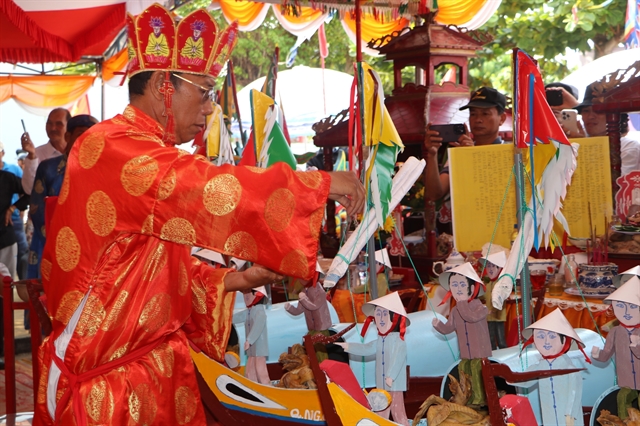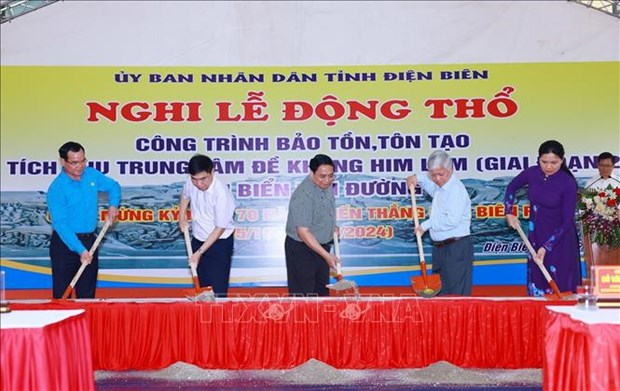 Features
Features

" />Efficient management of the Láng Sen Wetland Reserve has fostered an abundance of precious giant fish, making it an exciting place to visit.
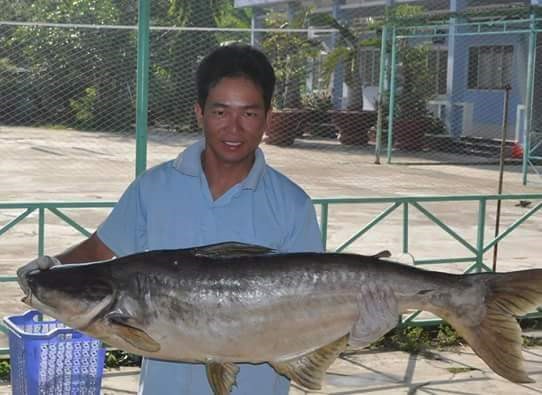 |
| Impressive catch: A giant Mekong snakehead fish was found in the Láng Sen Reserve in 2011. Photo courtesy of the Láng Sen Wetland Reserve |
Efficient management of the Láng Sen Wetland Reserve has fostered an abundance of precious giant fish, making it an exciting place to visit.
By Phạm Hữu
Throughout the Mekong Delta, overexploitation has seen the catch dwindle in its rivers and canals, but there is a welcome exception.
In the Láng Sen Wetland Reserve, the sighting of giant mudfish weighing over 10kg each has become normal, and fish weighing 7-8kg are considered “babies.”
Efficient management of the reserve has fostered an abundance of the precious giant fish, making it an exciting place to visit.
On a sweltering day earlier this month, we visited the Láng Sen Wetland Reserve and were welcomed by the cool freshness of the canals and the shade of the luxuriant cajuput forest.
Most of the fish found in Láng Sen were native to the place, and have been there for a long time, said Nguyễn Linh Em, a reserve staff showing us around.
He said that since its establishment in 2004, the reserve’s management board had built a dyke to prevent external factors from affecting its ecosystem. The fish species in the core area of the reserve have therefore enjoyed favourable conditions to thrive and multiply themselves.
A survey found that a Mekong giant snakehead fish in the reserve can grow up to 1.5m long and weigh up to 43kg, while a dotted snakehead fish can weigh 13kg and be 1m long.
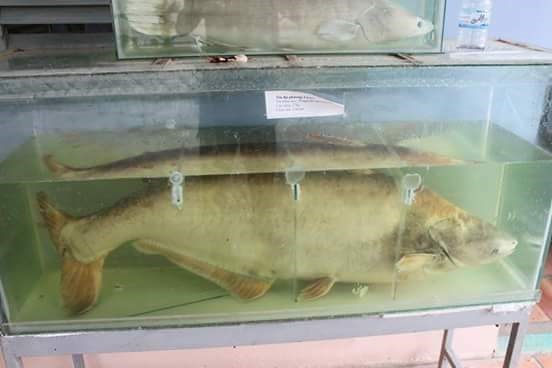 |
| Specimen: A giant Mekong snakeheadfish is embalmed to preserve its genes at the Láng Sen Wetland Reserve. Photo courtesy of the Láng Sen Wetland Reserve |
Human intervention in the fish’s natural habitat, particularly fishing, is strictly restricted. However, we were hoping that this field trip would give us some sightings of the large fish.
As we moved from the buffer zone to the core area of the reserve on motorbikes, Em pointed at the canal flowing alongside the path, saying: “There are many giant snakehead fish and grass carps swimming in this water.
He told us an interesting incident that had happened several years ago.
“It was in this area that I accidently spotted some commotion in the water. A closer look showed that a school of giant snakehead fish, each weighing about a dozen kilos, were jostling each other to bite off the tail of another big fish that was about to lay eggs. After the fish had gone, we took the prey out of the water and found out that it was a carp weighing about five kilos.”
Em informed us that the giant dotted snakehead fish has sharp teeth and a ferocious nature, so they tended to hunt smaller fish for food. Even huge carps are delicious prey for the giant dotted snakehead fish which can also eat rats and even wild ducks or baby birds that unfortunately fall into the water. Many ducks raised in the reserve have been eaten by thegiant fish, he said, surprising us.
During a routine patrol in 2014, the staff of the reserve had fished out a 13kg giant snakehead fish that was a metre long, but the dark waters shelter an abundance of these fish that are even bigger.
The giant Mekong snakehead fish is not native to the reserve. During each flooding season, the fish drift along with the water flow from the Mekong River. After the floods recede, some of the fish do not leave, and take shelter in Láng Sen.
Em said the further we moved into the core area, the more likely it was that we would encounter a school of the Mekong giant snakehead fish, each weighing about 35kg, which emerge to the surface in search of food every noon.
He was right. We were indeed lucky to see a school of baby snakehead fish and two adults. It was a beautiful, heartening sight, especially considering the fact that last year’s draught had almost wiped them out.
The staff of the reserve assume that a bigger school of giant snakehead fish is living in the canal system of the reserve. However, the staff are not too pleased with this because these fish cannot reproduce in the local climate change induced weather conditions, endangering the species’ existence.
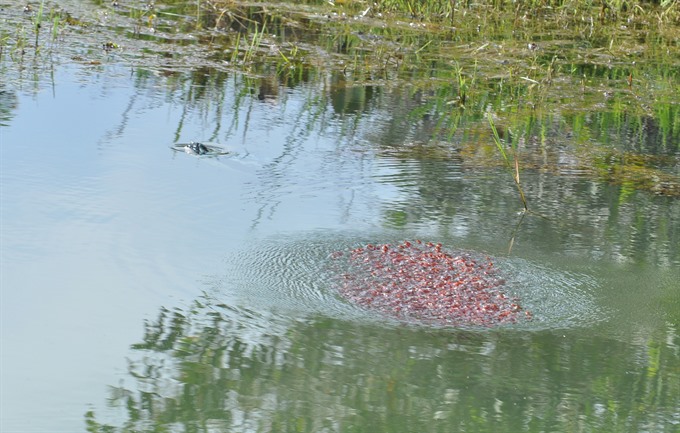 |
| Family affair: A school of baby giant snakehead fish swim in the Láng Sen Wetland Reserve. The baby fish are always seen under the protection of their mother. VNS Photo Khánh Duy |
The big rescue
Last year, wetlands in the Mekong Delta, including the Láng Sen Reserve, suffered from a severe drought.
Nearly 2,000 hectare of cajuput forest died and even the core area in the reserve dried up. The land was chapped by drought and 50 hectare of lotus plants were totally lost. Large quantities of fish lay dying on bare land.
The fish that survived concentrated in stagnant puddles. The entire workforce of the reserve was mobilised to transport the surviving animals and plants from dry waterways to safe zones.
“The water had dried up, the grass was burnt and the fish rotted, and it was stinking everywhere,” Em recalled.
“We used jute bags to carry hundreds of fish that were still alive to water-filled canals. Many blotched snakehead as big as an adult calf that were about to die were saved in the nick of time,” he said.
Trương Thanh Sơn, director of the Láng Sen Wetland Reserve, said that to preserve all the species, water sources within the reserve were being rejuvenated to expand their habitant and create more breeding zones for the fish.
Locals used to illegally enter the reserve and use electric shock to catch the fish in large quantities. About 400 rangers have been assigned to take turns to protect the reserve round the clock, particularly its core area. Sentry boxes are manned day and night, keeping poachers at bay.
Besides, local people have also been encouraged to contribute to the preservation of the precious species in the reserve.
“As soon as they catch a giant fish, they just need to inform us at the Láng Sen Wetland Reserve. Someone from the reserve will go there, purchase the fish and return it to its natural habitat,” Sơn said. VNS
Established in 2004, Láng Sen Wetland Reserve in the southern province of Long An still preserves the original ecosystem of the Đồng Tháp Mười (Plain of Reeds )Wetlands in the Mekong Delta, along with the Tràm Chim National Park in Đồng Tháp Province.Spread over 4,800ha of wetland and cajuput forest, the reserve is home to more than 150 kinds of plants, 140 kinds of birds, and over 90 fish species, 25 of which are native to the Mekong Delta. All species are being targeted by stringent preservation efforts.
The reserve was recognised in 2015 as the seventh Ramsar Convention site in Việt Nam - an international agreement on the conservation of wetlands which Việt Nam signed in 1989.
(The Vietnamese version of this story was published in the Thanh Niên newspaper on July 16, 2017)
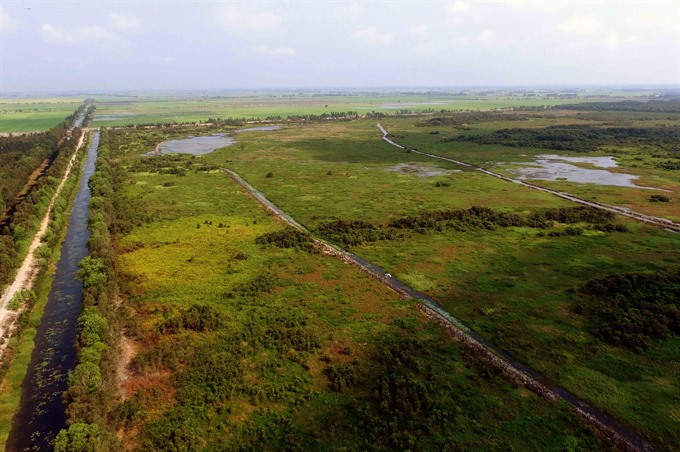 |
| Green space: A wetland forest in the Láng Sen Reserve seen from above. VNA/VNS Photo An Hiếu |
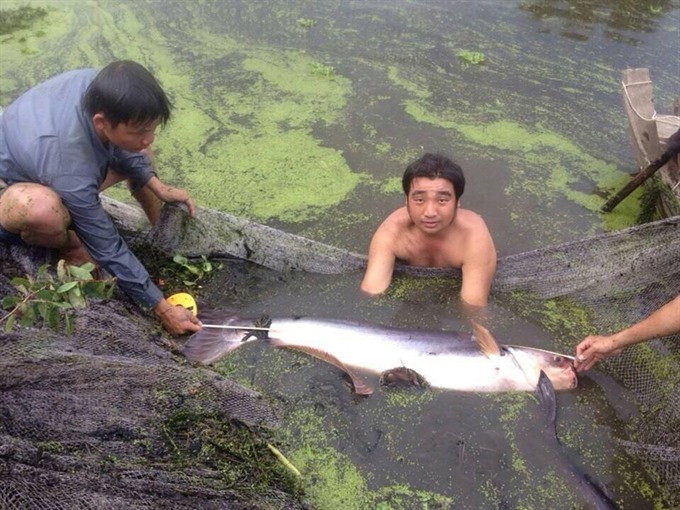 |
| In the water: The staff of the Láng Sen Reserve conduct regular measurement of the fish’s weight and length. VNS Photo Khánh Duy |
 |
| Big fish: Nguyễn Linh Em measures a giant snakehead fish, that weighs about 13kg and is a metre long. VNS Photo Khánh Duy |
 |
| Sight to behold: Visitors to the Láng Sen Reserve can easily catch sight of giant fish emerging from the water. VNS Photo Khánh Duy |


